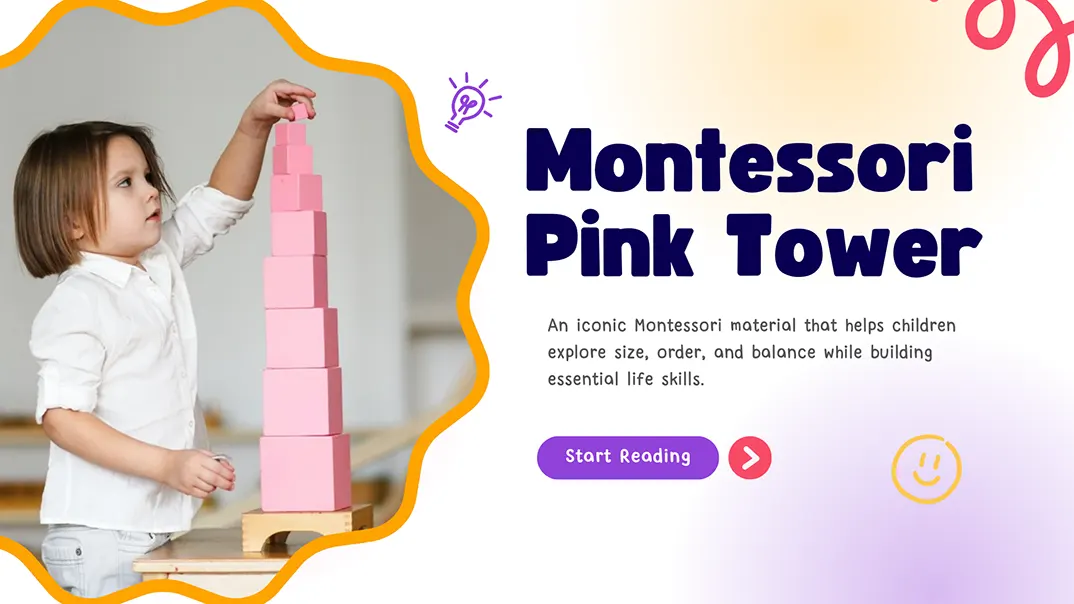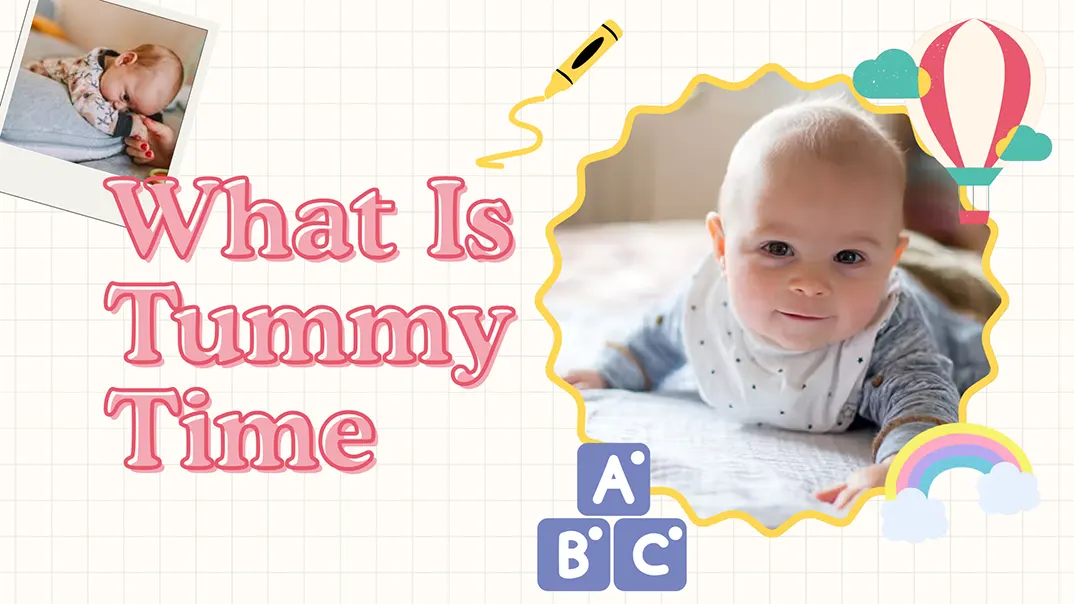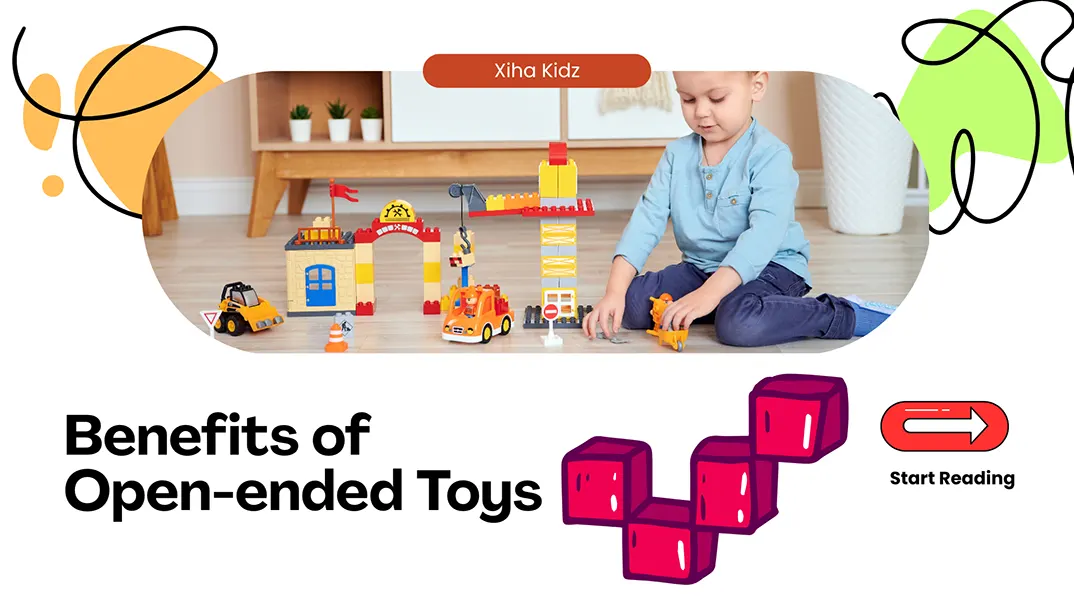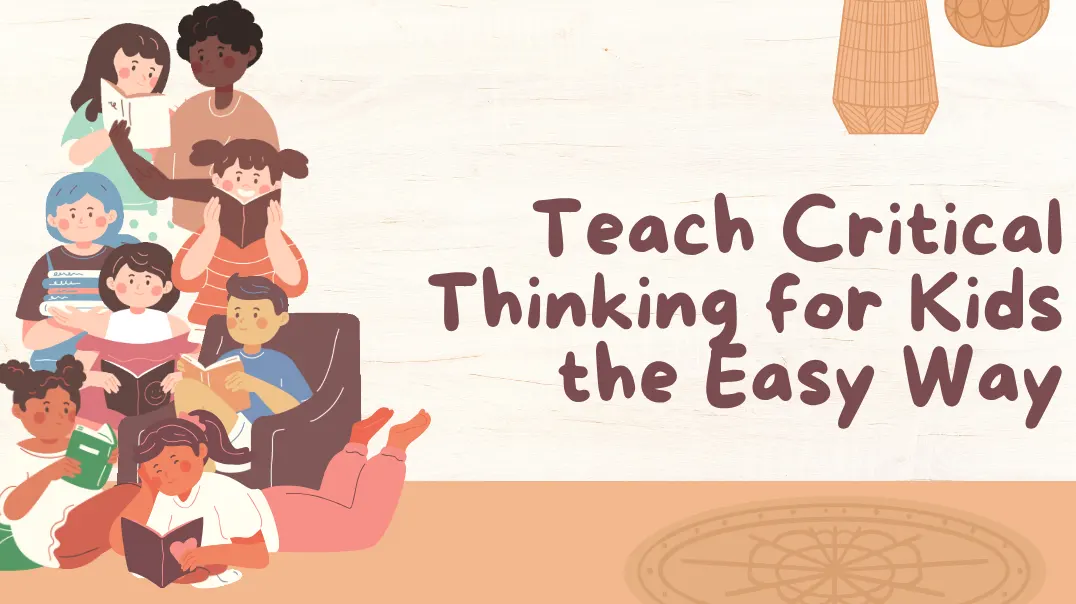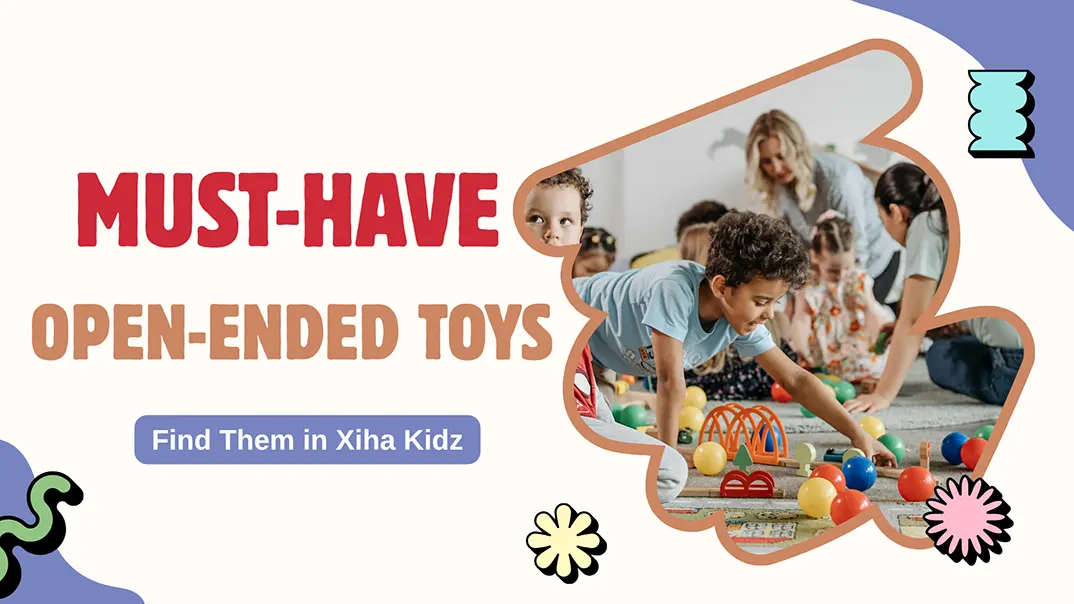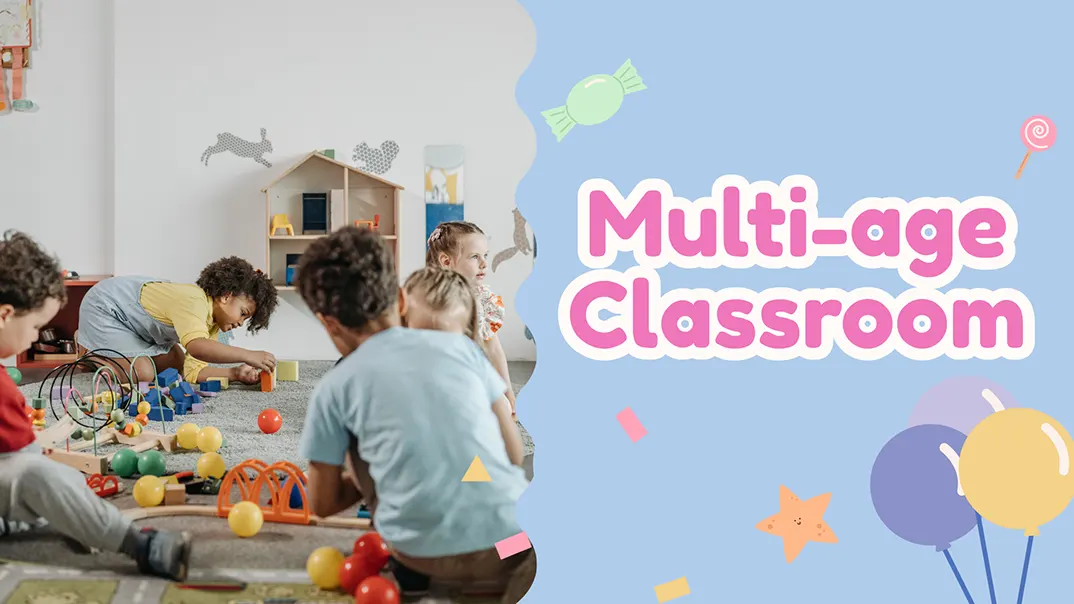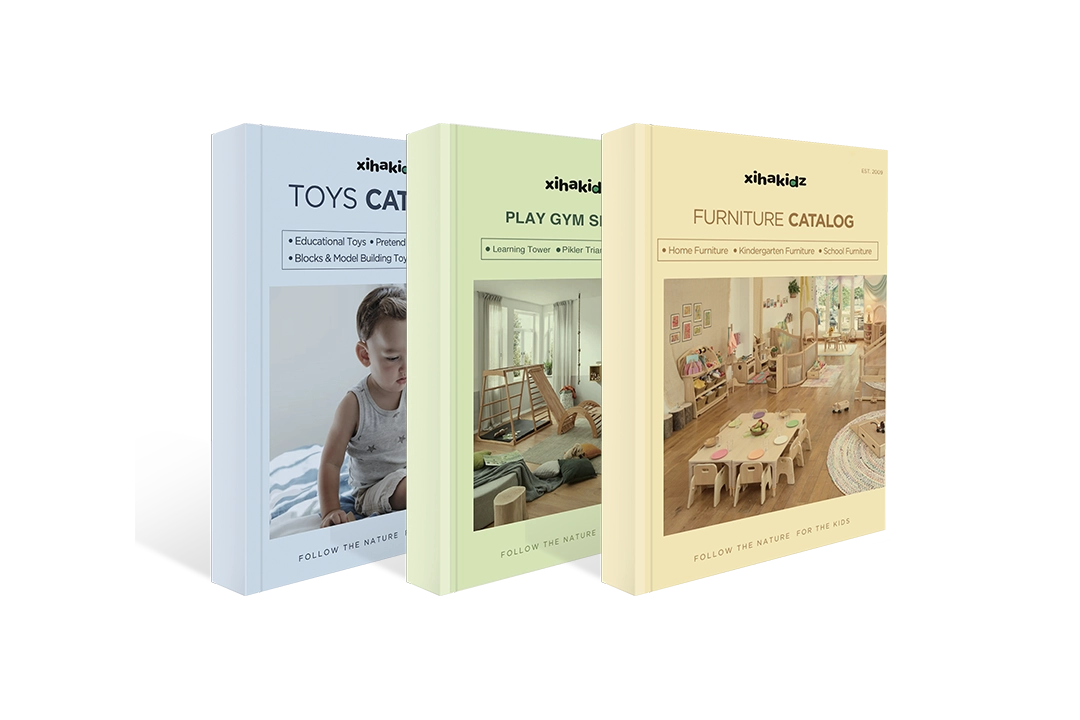In Montessori classrooms across the world, you’ll find a striking pink structure made of ten wooden cubes arranged in a tower, known as the Montessori Pink Tower. Carefully crafted to vary in size, each cube invites comparison and discovery.
Children are naturally drawn to order, balance, and beauty, and the Montessori Pink Tower taps into this innate curiosity. Rather than relying on direct instruction, the Pink Tower allows children to learn through manipulation and observation. It invites them to discover relationships in size, sequence, and balance.
In this post, we’ll uncover how the Montessori Pink Tower works and what it teaches. Keep reading to uncover how this simple tool becomes a powerful resource for early learning.
What Is Pink Tower in Montessori?

The Montessori pink tower is a classic educational material used in early childhood classrooms to introduce children to visual and tactile experiences of size, order, and spatial awareness. It consists of ten solid wooden cubes, each painted pink, ranging from the largest cube at 10 centimeters to the smallest at 1 centimeter, with each cube decreasing by exactly one centimeter in all dimensions. Because the cubes are identical in every aspect except size, children are naturally guided to focus on dimension as the key variable.
Maria Montessori, the founder of the Montessori method, emphasized that children learn most effectively through active exploration and purposeful work. The Pink Tower embodies this philosophy. It invites children to engage in repetition, practice self-correction, and develop independence. Instead of receiving direct instruction on how to stack the cubes, children are free to explore the material at their own pace, often returning to the activity multiple times until they achieve mastery. Through this process, they strengthen physical coordination while also cultivating patience, concentration, and confidence.
Why is the Montessori Pink Tower Pink?
The color of the Montessori Pink Tower is not accidental. Maria Montessori chose pink intentionally to make the material visually attractive, distinct, and inviting to young children. Bright yet gentle, the shade of pink captures attention without being overwhelming, encouraging children to approach the material with curiosity and focus.
Using a single color also serves a deeper educational purpose. Since all ten cubes are painted the same shade of pink, the child’s attention is directed only to differences in size. No distracting patterns, colors, or textures compete for focus, which ensures that the exercise remains centered on visual discrimination of dimension.
Additionally, the pink color gives the material an aesthetic quality that reflects Montessori’s belief in surrounding children with beauty and harmony. By presenting materials that are simple, consistent, and visually pleasing, the classroom environment becomes a place where children are naturally motivated to work with care and respect.

What Is the Purpose of the Pink Tower in Montessori?
The Montessori Pink Tower was created with a clear educational purpose. It is designed to help children refine their visual sense of dimension by comparing cubes that gradually increase in size. Through repeated practice, children begin to notice differences in height, width, and volume, which builds a foundation for logical thinking and early mathematical understanding.
Educational Benefits of the Montessori Pink Tower
- Hand–Eye Coordination: Children carefully align and place each cube, which strengthens controlled movement and balance.
- Fine Motor Development: Lifting, carrying, and positioning cubes builds strength and precision in the small muscles of the hand.
- Writing Readiness: Handling the smallest cubes supports the tripod grip, preparing children for holding a pencil later on.
- Vocabulary Growth: Using comparative terms like small, smaller, smallest, big, bigger, and biggest expands descriptive language.
- Math Awareness: Comparing sizes introduces concepts of measurement, sequencing, and the foundation for base ten understanding.
- Concentration: The activity requires children to stay focused, observe closely, and repeat with sustained interest.
- Precision and Problem Solving: Stacking the tower encourages accuracy, self-correction, and logical adjustments.
- Haptic Perception: Through handling each cube, children refine their tactile sense and awareness of physical properties.
- Visual Discrimination of Dimension: Children practice identifying differences in length, width, and height with increasing accuracy.
カスタム家具ソリューションで教室を変身させましょう
Montessori Principles Reflected in the Pink Tower
The Montessori Pink Tower is a powerful example of how core Montessori principles are brought to life through hands-on learning. Its design and use embody several fundamental ideas that guide the Montessori method.
Self-Directed Learning (Auto-Education)
Children in a モンテッソーリ教室 are free to choose the Pink Tower when they are developmentally ready. There are no external rewards or pressures. The child works with the material out of curiosity and interest, which reflects the principle of self-directed learning. This intrinsic motivation strengthens their sense of independence and responsibility.

エラーの制御
One of the most important principles in モンテッソーリ教育 is allowing the child to recognize and correct their own mistakes. The Montessori Pink Tower is designed so that errors are visible. If the blocks are placed in the wrong order, the tower will look uneven or unstable. The child can see the mistake without being corrected by an adult, and this experience encourages problem-solving and self-correction.
Sense of Order
The act of building the Montessori Pink Tower from largest to smallest reinforces the concept of order, which is deeply valued in the Montessori classroom. Children naturally crave structure and predictability, and this material supports that by providing a clear beginning, sequence, and end. As they stack the cubes correctly, they experience a sense of satisfaction that comes from creating harmony and balance.
Concrete to Abstract Learning
モンテッソーリ教材 are designed to take abstract concepts and make them concrete. The Pink Tower introduces measurement, sequencing, and early mathematical thinking through tangible, physical experience. This aligns with the Montessori belief that abstract thinking emerges from concrete manipulation.
Things to Consider Before Buying a Montessori Pink Tower
Pink Tower is a scientifically designed didactic material meant to refine visual discrimination of size, support fine motor development, and build foundational math concepts through sensorial learning. Here are the key aspects to consider when choosing the perfect Pink Tower for your classroom or home learning environment:

1. Adherence to Montessori Dimensions and Proportions
A genuine Montessori Pink Tower should consist of ten pink wooden cubes, ranging in size from 1 cm³ to 10 cm³, increasing progressively by exactly 1 cm per cube. This precision is critical. If the cubes are even slightly off in dimension, the material loses its control of error and weakens the sensorial purpose of the activity.
2. Material Quality and Finish
Traditionally, the Montessori Pink Tower is made from solid wood and painted in a soft pink color with a matte finish to avoid reflection and distractions. Look for towers that use non-toxic, child-safe paints and finely sanded edges. The surface should be smooth and consistent to facilitate stacking and handling.
3. Weight and Texture Consistency
The cubes should be solid and proportionally weighted to enhance tactile discrimination. A cube made from hollow plastic or lightweight foam, though cheaper, cannot offer the same sensorial input as a well-crafted wooden alternative. Consistency in weight also contributes to the material’s indirect preparation for mathematical and scientific thinking.
4. Choose Certified Montessori Materials
Instead of focusing only on official certificates, look for signs that the product follows Montessori principles and classroom expectations. Reliable manufacturers usually provide size specifications, safety details, and information about the materials they use. Choosing a supplier known for producing authentic Montessori materials will ensure that the Pink Tower is accurate, safe, and long-lasting.
カスタム家具ソリューションで教室を変身させましょう
5. Manufacturer Reputation and Craftsmanship
Reputable brands often demonstrate a deep understanding of Montessori philosophy and educational needs. Seek out suppliers with a proven track record in producing Montessori materials and providing professional support for early childhood classrooms. Detailed craftsmanship reflects respect for the child’s learning environment and enhances the long-term durability of the material.
6. Storage and Presentation Considerations
Consider whether the Montessori Pink Tower comes with a dedicated wooden tray or stand for storage. Proper storage is important not just for organization but also for maintaining the material’s presentation, which is a key part of the Montessori prepared environment.
7. Intended Learning Environment
For formal Montessori classrooms, strict adherence to size, weight, and materials is non-negotiable. However, for home use or blended learning environments, slight adaptations may be acceptable as long as the core educational purpose remains intact. Always match the Montessori Pink Tower to the developmental needs of the children and the educational context.
How Montessori Teachers Present the Pink Tower?
Montessori teachers approach the Pink Tower with care and intentionality, ensuring that children experience both freedom and structure. The goal is not direct instruction but guiding children toward independent discovery.
1. Preparing the Environment
Before the presentation, ensure that the classroom is calm and free from unnecessary distractions. The floor mat should be laid out neatly, and the Montessori Pink Tower should be fully assembled and displayed on the Sensorial shelf. This order and readiness signal to the child that the activity has purpose and structure.
2. Transporting the Cubes
Each cube is carried one at a time, using two hands, from the shelf to the floor mat. The teacher begins with the largest cube and places it randomly on the mat. This step models coordination, balance, and care for the material. It also provides the child with a subtle lesson in responsibility and focus.
3. Silent Demonstration
The teacher begins building the tower, starting with the largest cube. Each subsequent cube is placed precisely in the center of the one below it. No words are spoken. The silence allows the child to fully concentrate on the visual and physical aspects of the activity. The teacher works slowly and gracefully, showing intention with every movement.
4. Disassembling the Tower
Once the tower is complete, the teacher pauses briefly, allowing the child to observe the final result. Then, starting from the top, the teacher removes one cube at a time and places it back on the mat in random order. This shows the child that the activity can be repeated and encourages care during cleanup.
5. Minimal Verbal Guidance
Instead of lengthy explanations, the teacher relies on actions. Words such as “large” and “small” may be introduced after the child has observed and interacted with the cubes, helping to connect language with sensory impressions.
6. Invitation to Explore
After the demonstration, the child is invited to try building the tower independently. Teachers do not correct mistakes directly but allow the child to repeat the process, notice differences, and self-correct. This cultivates patience, problem-solving, and concentration.
7. Built-In Control of Error
The design of the Montessori Pink Tower provides its own feedback. If the cubes are stacked out of order, the tower will appear uneven or topple. The teacher’s role is to step back, giving the child space to identify and resolve the mistake.
8. Extensions and Variations
When mastery is shown, the teacher may introduce variations, such as laying the cubes in a horizontal sequence, creating patterns, or combining them with the Broad Stair. These extensions expand the child’s exploration of dimension, comparison, and creativity.
カスタム家具ソリューションで教室を変身させましょう
Montessori Pink Tower Activities and Extensions
The Montessori Pink Tower offers more than just stacking practice. Once a child has mastered the basic activity, Montessori educators introduce a variety of engaging extensions and follow-up activities that deepen learning and enhance skills in new ways. These activities allow children to revisit the material with fresh challenges, encouraging creativity, problem-solving, and cross-sensorial integration.

1. Horizontal Layout
Instead of stacking vertically, the child arranges all ten cubes in a straight line on a floor mat, from largest to smallest. The teacher may demonstrate the first few cubes, then step back and observe. This variation shifts the child’s spatial perception, reinforcing sequencing, size gradation, and left-to-right orientation.
2. Mixed Tower Challenge
The teacher introduces an extra challenge by mixing in a few additional cubes from a second Pink Tower or the Broad Stair. The child is invited to identify the correct cubes and rebuild the original tower. This activity strengthens size discrimination, problem-solving, and attention to detail while reinforcing mastery of the original material.
3. Combination with Broad Stair
Children are encouraged to combine the Pink Tower and Broad Stair to create patterns or symmetrical structures, such as stair-step towers or layered pyramids. This open-ended extension supports visual-spatial reasoning, creativity, and an understanding of the relationship between height and width.
4. Blindfolded Reconstruction
Once the child is confident with the tower, they can attempt to rebuild it while blindfolded. The teacher scrambles the cubes, and the child uses only their hands to feel and stack them in order. This heightens tactile perception and memory, deepening the sensorial experience beyond visual cues.
5. Distance Carrying Game
The cubes are placed on one side of the room, and the mat is set up on the opposite end. The child carries each cube one at a time across the space to build the tower. This version encourages concentration, stamina, and gross motor control while maintaining the original sequence and structure.
6. Matching Cards
The teacher provides cards that show images of the Montessori Pink Tower in different configurations, such as reversed stacks, horizontal lines, or partial builds. The child selects a card and recreates the image using the real cubes. This exercise enhances visual matching, 2D-to-3D translation, and planning skills.
当社の全製品ラインナップをご覧ください
幼稚園や学校向けの最高品質の家具や遊具を取り揃えた当社の総合カタログをご覧ください。
FAQs About Montessori Pink Tower
- Can the Pink Tower Be Used for 言語発達?
Yes. After the child has explored the material sensorially, teachers often introduce size-related vocabulary using the Three-Period Lesson, helping children learn words like “large,” “small,” “biggest,” and “smallest.” - What Is the Control of Error of the Pink Tower in Montessori?
The control of error in the Montessori Pink Tower comes from the cubes themselves. If a child places them out of order, the tower looks uneven or becomes unstable, allowing the child to see and correct the mistake independently without adult intervention. - What Is the Target Age Group for Montessori Pink Tower?
The target age group for the Pink Tower is generally 2.5 to 4 years old. During this period, children are especially sensitive to order, coordination, and sensorial exploration. The activity helps them refine visual discrimination, balance, and fine motor skills. Older preschoolers may continue using the Pink Tower for extensions that connect to math, language, and creative problem solving. - How Does the Montessori Pink Tower Provide Indirect Preparation for Future Learning?
The Pink Tower offers indirect preparation by laying the groundwork for later concepts in math, language, and writing. Through repeated practice, children refine fine motor control for pencil grip, develop sequencing skills essential for mathematics, and build vocabulary for size and comparison. These early sensorial experiences create a strong foundation for more abstract academic learning. - Why Are All the Cubes the Same Color?
The cubes are uniformly pink to isolate the concept of size. In Montessori materials, color is intentionally consistent to avoid distracting the child from the primary educational goal. - Is the Montessori Pink Tower Suitable for Home Use?
Yes, the Pink Tower can be used at home as well as in the classroom. It provides children with a meaningful way to practice concentration, coordination, and problem-solving. Parents can present it on a low shelf, encourage independent exploration, and support learning by observing rather than directing.
結論
The Montessori Pink Tower may appear simple at first glance, but it carries extraordinary educational value. Through hands-on exploration, children refine their senses, build coordination, and internalize complex concepts like size, order, and sequence. The material not only engages the child physically but also prepares them cognitively for future learning in math, language, and science.
For schools, teachers, and parents seeking authentic Montessori materials, choosing high-quality products is essential to preserve the educational value. シーハ・キッズ, as a professional manufacturer and supplier of Montessori materials, provides carefully crafted Pink Towers and a full range of Montessori materials. By offering durable, precise, and child-friendly materials, Xiha Kidz helps create learning spaces where children can thrive with confidence and joy.

